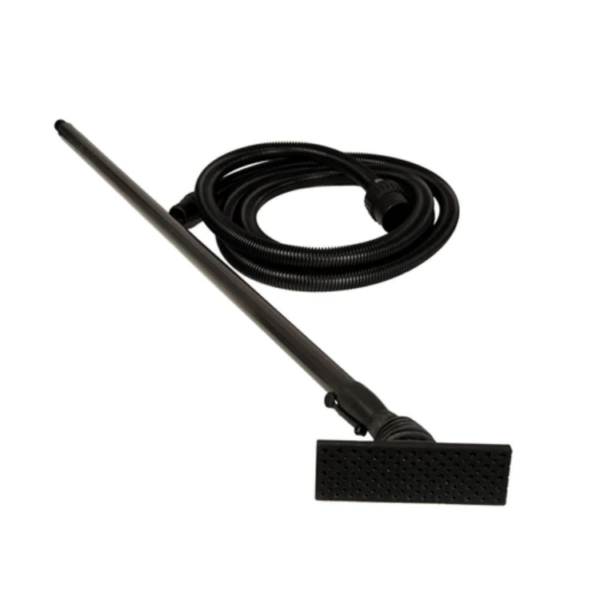If you have worked with drywall in the past, you will know that drywall dust is an occupational hazard you face every day. Inhaling drywall dust will lead to respiratory issues such as irritation and inflammation in the lungs, coughing fits, and much worse. Without the proper steps to protect yourself against drywall dust inhalation, you could face serious health problems.
Drywall is made up of minerals such as gypsum and silica, and these minerals are found in drywall dust. Once breathed in, some gypsum or silica will stay behind and cause damage to your lungs. You will experience symptoms like shortness of breath, coughing, and tightness in your chest.
Before you start treating drywall dust inhalation, you will need to determine if the reason for the symptoms is because of the dust and not personal health concerns. If the dust you are inhaling bothers your eyes and nose, then there is a cause for concern. If you recognize these symptoms, we have a few suggestions to help ease the irritation and ease the symptoms.
Use coupon code DUST10 to save 10% off your order. Limit is 1 per customer.
-
Mirka DECO 2.75″x 8″ 113H Grip Sander Tool with Telescoping Pole Kit (MIR-9300)
Rated 0 out of 5Drywall Sanders USD $327.08 -
Sale!
 Out of stock
Out of stock
Circle Brand N95 NIOSH Dust/Mist Respirator (20masks/BX)
Rated 0 out of 5Protective EquipmentUSD $14.74Original price was: USD $14.74.USD $13.27Current price is: USD $13.27. -
Sale!
 Out of stock
Out of stock
Circle Brand N95 NIOSH Respirator w/Valve (10masks/BX)
Rated 0 out of 5Protective EquipmentUSD $14.17Original price was: USD $14.17.USD $12.75Current price is: USD $12.75.
Treatment For Drywall Dust
The following are only treatments that may help ease irritation and are not a solution to inhaling drywall dust. If you have serious respiratory symptoms, please consult your doctor for medical advice.
Take deep breaths and cough
It may sound simple, but your respiratory system has a built-in defence mechanism that expels unwanted intruders. Before drywall dust can make it directly into your lungs, it must pass your bronchial tubes. While the dust particles are in your tubes, you should be able to cough and breathe out the dust. However, once silica dust reaches your lungs, the damage will be irreversible.
Gargle with salt water
Gargling with salt water is an old home remedy used to clear your throat. The idea behind using this method is that the water’s salt produces ions that attract charged particles like dust out of your throat and back into the glass of water. If the drywall dust is further down your throat, swallowing a little will dislodge the dust and allow you to cough out the rest of the dust.
Use a humidifier
Using a humidifier will increase the percentage of water vapour in the room. Increasing the water vapour will cause suspended dust particles to fall, improving air quality and having fewer hazardous materials in the air.
Rinse out your mouth and sinuses
Once you are done working at a job site, or if you feel irritation, make sure to rinse out your mouth and sinuses. Drywall dust can sit inside your mouth or nose and eventually be breathed into the lungs. Rinse out your mouth with warm water and spit into a sink or any receptacle you may have.
Drink Warm Herbal Tea
Herbal tea is known to both soothe your throat and keep you hydrated. Hot drinks will break down drywall dust in your lungs and dissolve drywall particles that may have been caught in your throat.
Prevention For Drywall Dust
While the above treatments manage the symptoms of drywall dust inhalation, the best course of action is prevention. Preventing inhalation of drywall dust reduces this life-threatening hazard in your workspace.
Use personal protection equipment
It has been proven that using personal protection equipment, for example, a dust mask or respirator reduces the chances of developing asthma-type symptoms. Wearing protective equipment limits the chance of having hazardous materials enter your lungs.
Close your mouth while cutting and sanding
There are two ways you can breathe. One is through the nose, and the other way is through the mouth. Closing your mouth and breathing through your nose limits how drywall dust can enter your body. Breathing through your nose also has a better filtration system than through your mouth, as drywall dust particles can be caught on nose hairs.
Use a wet sanding sponge
One of the best pieces of equipment to use during the sanding process is a wet sanding sponge. Wet sanding sponges are incredibly useful in minimizing the amount of airborne drywall dust.
Use a vacuum power sander
Power sanders have become a favourite tool among drywallers, and Mirka power sanders have a vacuum function built into the product itself. With the Mirka sander kit we have, you can sand drywall while also vacuuming up the dust while leading to a safe work environment.
Use coupon code DUST10 to save 10% off your order. Limit is 1 per customer.
-
Aria Flush Drywall Receptacle Mount [Luxe]
Rated 0 out of 5Interior Accessories USD $19.00 – USD $37.00 -
Aria Flush Drywall Receptacle Mount [Lite]
Rated 0 out of 5Interior Accessories USD $8.50 – USD $35.00






![Aria OG [Return]](https://masterbuildingmaterials.com/wp-content/uploads/2022/11/AV8X30BK-AV8X14BLK-600x600.jpg)
![Aria Flush Drywall Receptacle Mount [Lite]](https://masterbuildingmaterials.com/wp-content/uploads/2023/01/Aria-Vent-Flush-Drywall-Receptacle-Mount-Lite-600x600.jpg)




